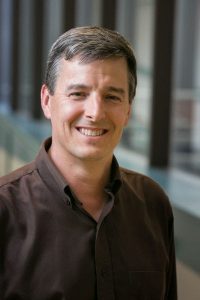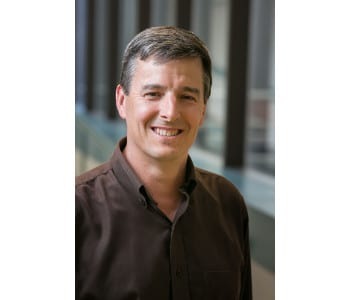 You type ‘Rogers Research Group’ into the Google search field. The first hit gives you a long, impressive lists of research areas, staff, collaborators, publications and news. The leader of this outstanding source of innovation in Electronics, Professor John A. Rogers, has recently accepted an invitation to be part of the Executive Advisory Board of Wiley’s new journal Advanced Electronic Materials. After looking into the broad range of projects and academic responsibilities he has already accumulated (.pdf), this sounds like surprising news. Or maybe not.
You type ‘Rogers Research Group’ into the Google search field. The first hit gives you a long, impressive lists of research areas, staff, collaborators, publications and news. The leader of this outstanding source of innovation in Electronics, Professor John A. Rogers, has recently accepted an invitation to be part of the Executive Advisory Board of Wiley’s new journal Advanced Electronic Materials. After looking into the broad range of projects and academic responsibilities he has already accumulated (.pdf), this sounds like surprising news. Or maybe not.
From the moment John Rogers graduated in physical chemistry from the Massachusetts Institute of Technology, his relentless contributions have substantially shaped the materials science landscape. Through both his academic work and entrepreneurship, and with the helping-hand of a small army of students and colleagues, the fabrication techniques of small-scale devices have progressed dramatically. Their direct application to the human body has been the ultimate goal of much of his recent studies.
Although his work is nowadays somewhat detached from the experiments themselves, John Rogers never loses sight of the major goals and challenges that lie ahead in the application of electronics to the improvement of people’s lives. And for him, the idealism of the science is retained: big goals for the common good go hand-in-hand with broad collaboration with his peers.
We asked Professor Rogers a few questions about his day-to-day work, his goals and the reasons that led him to accept joining the Executive Advisory Board of our new journal.
We know that you actively and extensively collaborate with many other research groups. How do you deal with the balance between competition and collaboration?
“The key is to work with folks who have complementary, non-overlapping expertise or capabilities. The unique, differentiated contributions that naturally come from such collaborators not only enable the best, most impactful research, but they also avoid competition and facilitate sharing of credit.”
How do you balance your duties within the academic structures with research work?
“I focus on performing necessary duties as efficiently as possible, in a way that avoids ‘mission creep’, so that I can save as much time for research as possible.”
How much time do you spend in the lab nowadays?
“I visit the labs regularly, but the pressures, responsibilities and travel obligations associated with an academic position these days make it very difficult to get directly engaged, in any significant way, in the experiments themselves.”
What is your major scientific engagement at the moment?
“A main focus of our current programs is on materials and devices that enable intimate integration of electronic/optoelectronic/microfluidic technologies with the human body. Specific recent examples include biodegradable silicon-based systems for monitoring and accelerating processes of healing in the context of traumatic brain injury and surgical interventions. Such devices fall into a broader class of technology that we refer to as ‘transient’ electronics.”
What are now, in your opinion, the major challenges to overcome in the fields you work in?
“The development of any new material and associated device technology always involves many major challenges, both scientific and technical. For instance, processing and assembly of water-soluble, biodegradable electronics demands non-aqueous and/or additive approaches that are radically different from those that are used in fabrication of established semiconductor devices.”
Is there one particular goal you aim still to attain in your career?
“As an academic, my main job is to train and mentor graduate students and postdocs so that they can be successful in the pursuit of their own independent careers in research and development. An essential goal is to be productive, in that sense. We also, of course, seek new scientific knowledge and, where possible, work on translating that knowledge out of our labs and into practical technologies.”
Is there something you would like to say to young students of materials science who might now be starting their careers (advice/warnings)?
“Choose ‘big’ scientific problems with relevance to societal grand challenges (e.g. energy, health, sustainability), pursue them persistently and leverage collaborations to accelerate progress.”
What reasons led you to embrace this task with Advanced Electronic Materials?
“Nearly all of our research programs involve unconventional electronic materials as a central focus. This journal will provide an excellent forum for sharing progress in this essential area of study.”
Some of the latest work of the Rogers Research Group includes studies featured in Advanced Materials, Advanced Healthcare Materials, and Advanced Functional Materials. John Rogers and his team are also frequent contributors to Small and Advanced Optical Materials. Further details on studies and more are available at the homepage of the Rogers Research group.
As he joins the Executive Advisory Board of Advanced Electronics Materials, Professor Rogers continues his roles as part of the Editorial Advisory Boards of Advanced Energy Materials, Advanced Functional Materials and Advanced Healthcare Materials.

















